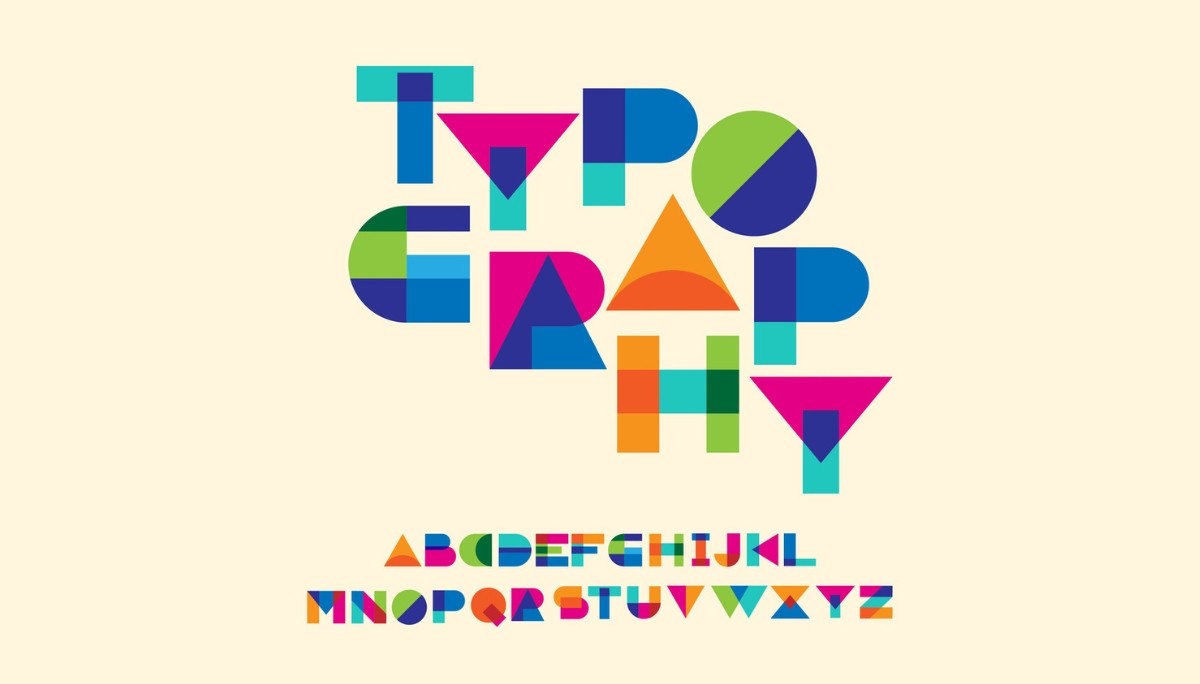Data-Driven Design: How Analytics Shapes Modern UX
By
Liz Fujiwara
•
Sep 9, 2025
Data design leverages information to enhance user experience (UX) design, allowing designers to make informed, evidence-based decisions that improve both engagement and usability. By analyzing user behavior, preferences, and interactions, designers can create interfaces that are not only functional but also intuitive and enjoyable. In this article, we’ll explore the foundations of data design, outline its key elements, and provide practical strategies for incorporating data into UX design processes. Whether you’re a designer looking to optimize workflows or a product team aiming to deliver better user experiences, understanding how to effectively use data can transform the way you approach design.
Key Takeaways
Data-driven design enhances the user experience by integrating both quantitative and qualitative data, enabling informed design decisions.
Key elements of effective data design include simplifying complex information, improving information retention, and boosting user engagement through interactive elements.
Maintaining a balance between data insights and creativity is crucial, as over-reliance on data can result in generic solutions that fail to address unique user needs.
Understanding Data Design

Data design is the cornerstone of modern UX design, essential for perfecting user experiences and maintaining satisfaction. Data provides a concrete foundation for informed design decisions by generating insights that test hypotheses. User experience plays a pivotal role in a product’s success or failure, highlighting the need for effective data design to meet and exceed user expectations.
Data-driven UX design relies on decisions backed by empirical evidence from data analysis. This approach focuses on improving audience engagement through careful interpretation of information. Companies known for their data-driven design practices depend heavily on user data and research to guide their design decisions. Understanding data analysis is foundational for recognizing trends and patterns that inform data-driven design.
Effective data design requires a combination of research methods, data analysis, graphic design, and communication skills. The primary goal is to create useful data products, simplify complex information, and enhance audience connection. Structuring data for easier access and prioritizing relevant content significantly improves information sharing.
The Role of Quantitative and Qualitative Data in Data Design
In the realm of UX design, understanding user behavior is paramount. This is where quantitative and qualitative data come into play. Quantitative data provides measurable metrics that help designers analyze trends and identify issues at scale. It often involves structured surveys and data analytics, delivering objective insights into user behavior. This type of data is instrumental in evaluating how users interact with a product to enhance the overall experience.
On the other hand, qualitative data digs deeper into user needs, uncovering the reasons behind their behaviors. Through flexible methods such as interviews and open-ended surveys, qualitative research allows for a more nuanced exploration of user sentiments.
Combining qualitative and quantitative data yields richer insights, essential for a product-led growth strategy. This holistic approach provides a comprehensive view of user interactions, enabling designers to make more informed decisions. By integrating both types of data, the design process is guided by a complete understanding of user behavior, leading to more effective and user-centric solutions.
Key Elements of Effective Data Design
Effective data design is a strategic approach that prioritizes user engagement and information accessibility. To achieve this, several key elements must be considered, including simplifying complex data, enhancing information retention, and increasing user engagement. Each of these elements plays a crucial role in creating a seamless and intuitive user experience.
Simplifying Complex Data
Simplifying complex data is essential to reduce cognitive load for users, making information easier to understand and act upon. Utilizing data visualization can significantly enhance comprehension by translating complex datasets into visual formats. For example, charts, graphs, and infographics can present data in a way that is both engaging and informative.
In addition to visual aids, micro-interactions can guide users through complex data presentations without overwhelming them. These small, interactive elements:
Provide feedback and cues that help users navigate and interpret data more effectively
Break down information into manageable chunks
Ensure users remain engaged and informed without feeling overwhelmed
Enhancing Information Retention
Improving information retention is a fundamental goal of effective data design. Leveraging repetition and reinforcement in data presentation helps strengthen user recall. For example, key information repeated in different formats or contexts can help users remember essential details more effectively. This approach ensures that users retain critical information, leading to better decision-making and a more satisfying user experience.
Increasing User Engagement
Increasing user engagement is another vital aspect of data design. Interactive visuals, such as clickable charts and dynamic infographics, allow users to explore data at their own pace, making the experience more visually appealing, dynamic, and engaging. Incorporating these interactive elements can significantly boost engagement by making the data presentation more immersive and enjoyable.
Creativity and intuition also play a crucial role in enhancing user engagement. By using innovative design elements and storytelling techniques, designers can create more compelling and memorable user experiences. This combination of data and creativity ensures that users remain engaged and satisfied, ultimately leading to higher levels of retention and overall satisfaction.
Data Collection Methods for UX Design

Collecting accurate and relevant data is the foundation of data-driven UX design. Various methods can be used to gather this data, each offering unique insights into user behavior and preferences. These methods include user research, surveys and interviews, usability testing, and heatmaps or click tracking.
By combining quantitative and qualitative data from multiple sources, designers can achieve a more accurate and in-depth analysis through multivariate testing, leading to more effective design solutions.
User Surveys & Interviews
User surveys and interviews are essential tools for understanding user needs and pain points. These methods include:
Surveys: Closed-ended questions that yield specific answers, providing valuable data for quantitative analysis.
Interviews: Allow for flexible questioning and deeper exploration of user sentiments.
Diary studies: Although less controlled, these provide long-term insights into user behavior.
However, challenges can arise, especially in large-scale businesses, where integrating user feedback can be difficult due to the volume of data collected. It is crucial to complement quantitative data with qualitative research to gain a complete understanding of user behavior. By analyzing focus group discussions and mitigating data biases, designers can derive actionable insights that enhance the user experience.
Usability Testing
Usability testing is a critical component of UX design, helping identify usability issues by observing user interactions. This method involves testing a product with users without asking for their opinions, providing objective insights into behavior. Usability testing can be conducted both in-person and remotely, offering flexibility in how interactions are observed.
Tools like session recordings and heatmaps from Hotjar provide quantitative data on user interactions. Analyzing this data reveals roadblocks in the user experience, guiding designers to implement changes and conduct further tests, including session replays. Measuring the impact of these changes and iterating based on user feedback is essential for optimizing the overall user experience.
Heatmaps & Click Tracking
Heatmaps are powerful tools for visualizing user interactions on a webpage, providing insights into behavior patterns. Scroll heatmaps, for example, indicate how far users scroll down a page, highlighting key engagement points. Movement heatmaps show where users move their mouse, revealing areas of attention and interaction.
Rage click maps identify locations where users repeatedly click in frustration, uncovering potential usability issues. Analyzing these heatmaps allows design teams to:
Enhance UX by repositioning elements based on user engagement data
Monitor specific user actions, such as button clicks and form submissions
Inform targeted design improvements, leading to a more user-friendly experience
Tools for Data-Driven UX Design

To effectively implement data-driven UX design, designers rely on a variety of tools, including UX analytics platforms and software that provide comprehensive insights into user behavior, engagement, and UX metrics. Popular tools include Google Analytics, Hotjar, and Mixpanel.
Each of these analytics tools offers unique features and capabilities, making them essential for collecting and analyzing user data effectively when using the right tools.
Google Analytics
Google Analytics is a powerful tool that provides valuable quantitative data for improving UX analytics. It tracks metrics such as:
Pageviews
Sessions
Bounce rates
These metrics offer a clear view of site performance. By monitoring user actions like button clicks and form submissions.
Google Analytics helps designers understand user behavior and identify areas for improvement. The data collected can be used to optimize user journeys and improve overall engagement. For instance, high bounce rates may indicate usability issues that need to be addressed, while increased pageviews and session lengths can signify user satisfaction and interest. Leveraging these insights allows designers to make data-driven decisions that improve user experience and boost conversion rates.
Hotjar
Hotjar combines qualitative insights with quantitative data, providing a comprehensive analysis of user behavior. Tools such as heatmaps and session recordings visualize user actions with color overlays, indicating interaction levels and helping designers understand engagement.
Integrating Hotjar with Google Analytics offers a more holistic view of user behavior and uncovers deeper insights into user needs and preferences.
Mixpanel
Mixpanel is an invaluable tool for tracking user journeys and events, offering deep insights into UX analysis. By combining qualitative and quantitative data, Mixpanel helps designers create detailed profiles of user interactions, enabling more effective UX improvements.
Surveys triggered by key actions provide immediate user feedback, ensuring that design decisions are informed by real-time data.
Implementing Data-Driven Decisions in UX Design

Implementing data-driven decisions in UX design involves connecting user behavior metrics to business goals, thereby supporting revenue growth. Utilizing both quantitative and qualitative data is crucial for guiding effective design choices.
Setting Goals and Objectives
Establishing measurable goals ensures that design efforts target the most critical areas for impact. Key aspects include:
Clear and measurable goals provide teams with focus and direction, enhancing alignment with user needs.
Defining clear KPIs is essential.
Focusing on actionable metrics ensures data drives meaningful design improvements.
Avoiding data overload prevents decision paralysis and helps design teams concentrate on metrics that truly matter.
Analyzing Data for Patterns and Insights
Effective data analysis helps designers uncover user preferences and behavioral trends. Key methods and tools include:
Employing statistical methods
Involving domain experts and users to identify pain points and areas for improvement
Using heatmaps and click-tracking tools to reveal user interactions and behavior patterns
These approaches provide valuable insights into how users engage with different elements on a webpage. For example, click testing shows user click patterns and the time taken to click, revealing areas of data interaction that align with their preferences. High pages per session can indicate user engagement or frustration, offering further insight into the user experience.
Using rigorous methods to analyze collected data ensures accuracy and helps avoid biases, leading to more informed design decisions.
Iterating and Refining Designs
Iterative design processes involve continuously refining designs through repeated development cycles. Feedback from users is essential, providing insights and suggestions for future improvements. Continuous iteration based on this feedback is crucial for optimizing the user experience.
Balancing Data with Creativity in UX Design
It is crucial to balance data-driven design with intuition. This balance helps create effective, user-centric solutions. While data provides valuable insights, creativity plays a key role in ensuring that designs are engaging and original.
The Importance of Intuition in Design
Intuition in design allows for the exploration of new ideas and innovative solutions. Empathy, guided by intuition, can lead to better alignment with user needs.
Incorporating storytelling elements into data presentations can also significantly enhance information retention among users.
Avoiding Over-Reliance on Data
Over-reliance on data can lead to solutions that fail to meet user needs, a challenge many designers face. Blindly following data trends can result in generic solutions that lack uniqueness, ultimately affecting a product’s success.
To achieve more innovative designs, it is crucial to explore diverse solutions beyond data insights alone.
Common Challenges in Data-Driven UX Design

Common challenges in data-driven UX design include data biases, misinterpretation, and managing data overload. These issues can significantly affect the effectiveness of UX strategies.
Data Biases and Misinterpretation
Flawed assumptions about user behavior can lead to misguided design strategies. Data misinterpretation may result in flawed decisions, an issue compounded by poor data quality and incorrect assumptions in data-driven design.
Data biases and misinterpretation can significantly impact the effectiveness of UX design strategies.
Contextual Factors and Resistance to Change
Contextual factors, such as physical environment and emotional state, significantly influence user behavior during interactions. Team members may be hesitant to embrace a data-driven approach in UX design, often due to doubts about the validity or relevance of the data.
Understanding these contextual factors and addressing resistance can improve UX strategies and enhance overall design effectiveness.
Managing Data Overload
To effectively manage the risk of data overload, it is crucial to prioritize metrics that align directly with user experience goals. Focusing on the most relevant data helps designers avoid decision paralysis and concentrate their efforts on meaningful improvements.
Introducing Fonzi: Revolutionizing AI Talent Hiring
In the rapidly evolving field of AI, hiring top talent can be challenging. Fonzi is revolutionizing AI hiring by connecting companies with pre-vetted AI engineers through structured events called Match Day, utilizing machine learning.
How Fonzi Works
Fonzi’s marketplace ensures that only highly qualified engineers and companies are matched, enhancing the quality of hires. The Match Day event allows companies to fine-tune their salary-backed offers within a 48-hour window, enabling fast hiring. Unlike black-box AI tools or traditional job boards, Fonzi delivers high-signal, structured evaluations with built-in fraud detection and bias auditing.
Benefits of Using Fonzi
Fonzi can significantly speed up the hiring process, with many decisions made within three weeks. Key features include:
Candidates do not incur any fees
Provides real job opportunities for free
Supports both early-stage startups and large enterprises, making hiring fast, consistent, and scalable
Enhances the candidate experience, ensuring engaged and well-matched talent
Summary
Data-driven design is a powerful approach that combines the rigor of data analysis with the creativity of intuitive design. By leveraging both quantitative and qualitative data, designers can create user experiences that are not only functional but also engaging and memorable. Key elements such as simplifying complex data, improving information retention, and increasing user engagement are essential for effective data design.
Implementing data-driven decisions involves setting clear goals, analyzing data for patterns and insights, and iterating designs based on user feedback. Balancing data with creativity ensures that designs remain original and user-centric. Despite challenges such as data biases and managing data overload, a well-executed data-driven UX strategy can significantly enhance both user satisfaction and business success.




